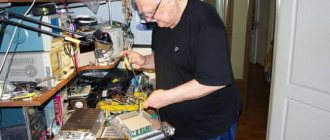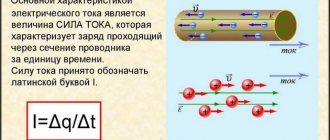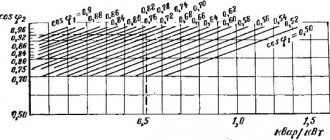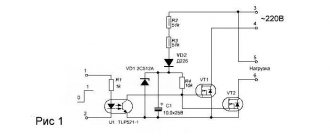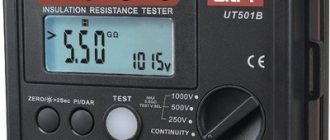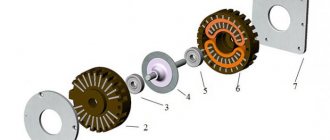Siemens programmable controllers
This type of device is in demand in a variety of fields - metallurgy, mechanical engineering, chemical and food industries, logistics. Siemens programmable controllers are represented by two main series - LOGO! and Simatic. Each model has the following technical and operational characteristics:
LOGO!
LOGO! This line of Siemens peripherals and controllers is characterized by its small size and versatility. PLCs are used to make automated control devices that are designed for logical data analysis. The modules interact with each other using commands built into memory. The controllers are controlled using specialized software (LOGO! Basic) or a built-in keyboard. Another advantage of the PLC line LOGO! is its low cost, thanks to which this series is considered the optimal solution for developing new systems or full-scale updating of existing ones.
Siemens Simatic S7
Simatic S7-300 and range . Designed to solve problems of increased complexity. Controllers of this series have the ability to use a large number of additional modules that change or expand the existing functionality of the system. The devices feature power regulation and a free cooling system to simplify operation and increase reliability. There is a comprehensive list of built-in functions that solve any automation task. Device control is available via a digital interface.
Siemens S7-1200 and series . Based on solutions from previous generations of Siemens devices, the controller is designed to automate systems of any level of complexity. Built-in functionality can be expanded with additional modules. Despite the high performance and stability of operation, the cost of the controllers remains at a level accessible to a wide range of consumers. 1200/1500 series controllers support the TIA (Totally Integrated Automation) concept and are capable of exchanging data via multiple communication channels - Ethernet, Profinet, P2P, PROFIBUS, Modbus, AS-Interface, USS, ASCII.
Siemens SIMATIC HMI. Operator panel designed for the development and maintenance of Simatic microcontrollers via HMI (human-machine interface). Includes software such as Simatic Protool, Simatic WinCC Flexible and Simatic WinCC. Operator panels are made in 3 versions for different conditions of use and technological requirements - key panels, basic panels, comfort panels and mobile panels.
Siemens S7-1500
The new generation universal PLC is used to create automated control systems for cyclic processes in all industries. Family advantages:
- compact modular design;
- use of industrial communication networks of any type;
- resistance to electromagnetic interference;
- natural cooling.
The TIA Portal programming environment simplifies the interaction between man and machine when controlling high and low voltage equipment, drive equipment, and communication devices at all levels.
The family includes modifications:
- with standard central processor;
- with compact CPU;
- based on F-CPU for emergency protection control systems
- with T-CPU for motion control;
- SIPLUS extreme S7-1500 for difficult production conditions.
The hardware of Siemens S7-1500 programmable controllers, in addition to the central processor module, includes signal input/output data modules in analog or digital form, high-speed counting, positioning, master pulse generation modules, switching and power supply units.
SIEMENS software
Industrial software is a system of interconnected tools for programming and operating Siemens automated systems. These components include the full functionality required for all stages of development and use of an automated control system. We offer the following solutions:
- TIA . An integrated software development environment for Siemens automation systems, covering all levels - from drives and controllers to the human-machine interface.
- WinCC . An HMI system designed for visualizing the technological process, setting up communications with microcontrollers, creating redundant systems and extensions for them.
- Step 7 . Software for creating automated systems based on Simatic programmable logic controllers (S7-300/400, M7, C7).
Classification of the LOGO PLC line
The lower level of the Siemens PLC line is represented by controllers called LOGO. Used to implement automation systems of the simplest format. They can become a full-fledged replacement for devices such as timers, time relays, etc. Despite their simplicity, these PLCs include the ability to connect various additional modules.
Siemens LOGO programmable logic controllers are represented in the line by the following types:
- Logo Basic 0BA6 in terms of design includes a liquid crystal display that visualizes any information from the user program and performs programming of the main module;
- Logo Pure 0BA6 is a simplified version, since the device does not have a display;
- Logo Basic 0BA7 are equipped with LCD displays with functions identical to the first item in this list.
Central Siemens PLC can come with different supply voltages:
- +24 V;
- +12 +24 V;
- ~24 V;
- ~115~240 V.
To expand the ranges for indicators such as temperature and humidity, it is possible to use SIPLUS LOGO modules in Siemens controllers.
It is important to note the differences between the models of the line according to types 0BA6 and 0BA7:
- the executed functional blocks in the first case are 200 pieces, in the second - 400;
- the first option uses the Logo serial port, and the second uses Ethernet;
- the ability to increase modules for expansion purposes is only available for 0BA7;
- In addition, the latest modification is equipped with an additional set of user functions and an increased number of flags (discrete and analog).
Please note that today, when considering these two types of Siemens PLCs, it is worth making a choice in favor of the second, since when recalculating costs, the first turns out to be simply unprofitable given the available set of functions.
Siemens power supplies
Energy sources ensure uninterrupted operation of industrial equipment. The Siemens SITOP line includes the Smart, Compact, Modular and LOGO!Power series. All power supplies we sell have a GOST R certificate of conformity and the following operational features:
- high efficiency;
- precise stabilization and minimal ripple of the output voltage with unstable input values;
- separation of input and output circuits using a galvanic element;
- work under natural cooling conditions.
Below is a detailed description of Siemens SITOP models:
- LOGO! Power. Manufactured as compact logic modules, this line of devices can accept a wide range of AC input voltages. Power supplies are capable of operating under unstable load conditions, delivering voltages from 5 to 24 volts.
- Smart and Compact. Compact power supplies with high overload capacity (up to 150%). They effectively protect equipment from short circuits, voltage surges and circuit overloads.
- Modular. Siemens power supplies of this brand have a modular design. They are complemented by various components that provide the ability to reserve, buffer, manage and analyze network parameters. The basic package includes a stabilized power supply with single-, two- or three-phase AC input voltage. The output voltage produced by the unit does not exceed 24 volts and has a current strength of 5-40 amperes. All power supplies of the SITOP Modular series are produced and sold in compact metal cases and have a protection level of IP20. The devices are mounted on profile rails that comply with the DIN standard.
Limitations of Siemens Logo PLC
Siemens PLC has restrictions on expansion of the instrument system. This factor is explained by the fact that the total number of discrete inputs cannot exceed 24 units, and the number of outputs cannot exceed 16 units. In this case, we mean taking into account the PLC module itself and the set with expansion modules. What additional module options may there be:
- including inputs and outputs of a discrete type: with a transistor switch and a current up to an indication of 0.3 A or a relay for switching processes with signals with a current of no more than 10 A;
- analog inputs and outputs correspond to a voltage range of 0-10 V or a current range of 4-20 mA.
But remember that both options have limitations. That is, such a system assumes, in terms of quantity, no more than 8 inputs and 2 analog outputs. But expansion is possible through the use of an additional central LPC, which is equipped with a separate Ethernet port.
Due to it, the system is expanded through network exchange with third-party systems. But this aspect will also be accompanied by restrictions:
- the number of input and output discrete signals will not exceed 64 units for each set;
- the number of analog inputs cannot be more than 32 units, and outputs - 16.
The programs themselves are executed exclusively by one programmable logic controller, which performs work in Master mode, and the rest, operating in Slave mode, are responsible for the interaction of the main Master mode with Slave expansion modules.
Modular I/O stations
SIMATIC ET200SP is a multifunctional modular station with IP20 protection level. Designed for distributed I/O systems based on PROFINET IO and Profibus DP networks. Supports information transfer rates up to 100 Mbit/s (PROFINET) and up to 12 Mbit/s (Profibus). Due to the modular architecture, it can be easily adapted and reconfigured for use for various production purposes. Supports installation of 64 modules simultaneously, and they can be replaced “hot” (without stopping the system). Siemens SIMATIC ET200SP is compatible with standard DIN profile buses 35x15x7.5 and 35x15x15 millimeters.
Our company develops, designs and implements automated systems, provides support in the operation and modernization of production equipment. You can order devices or services from our specialists by calling: +7(495) 64-220-64.
We are partners of Siemens.
SIMATIC ET200SP Manual
Complete solutions in a compact design: multifunctional modules Logo!
A striking example of this approach was the Logo! (Figure 1), manufactured by Siemens. Actually, the word “relay” in the name of these smart devices is left only as a tribute to tradition, since the set of functionality built into them by the manufacturer cannot be compared with the banal switching of conductors performed by conventional electromechanical relays. One such module can replace an entire block of relay switching logic, which not only saves space in the control cabinet, but also significantly reduces commissioning time.
Rice. 1. Logo! modules easily reconfigured into a given block diagram thanks to an extensive library of ready-made functions
The ideology of LOGO! modules is based on the developer drawing up the required block diagram by selecting from 8 main and 29 additional built-in functions. The main functions (Figure 2) include the usual operations of logical addition, subtraction, elimination, etc., and additional ones provide such capabilities as:
- PWM sequence generator,
- yearly clock switch,
- text message generator,
- proportional controller,
- analog amplifier,
- frequency detector,
- reverse counter,
- time relay,
- analog trigger.
Rice. 2. The basic logic functions of the modules include the most common binary logic operations
One control program can include up to two hundred executable functions, which determines the scope of application of these devices in various access control systems, climate control, lighting, industrial equipment and in many other areas of human activity. Table 1 below provides a parametric comparison of the programmable relays of the LOGO! family.
Table 1. Comparative parameters of programmable relays Logo!
| Name | Availability of display | Number of digital inputs/outputs | Type of digital outputs | Load current, A | Operating temperature, °C | Supply voltage, V | Overall dimensions, mm |
| 6ED1052-2MD00-0BA6 | – | 8/4 | relay | 10 – active 3 – inductive | 0…55 | 12 | 72x90 |
| 6ED1052-1FB00-0BA6 | Yes | 115 | 72x90 | ||||
| 6ED1052-1FB00-0BA7 | 115 | 107x90 | |||||
| 6ED1052-1HB00-0BA6 | 24 | 72x90 | |||||
| 6ED1052-1MD00-0BA7 | 12 | 107x90 | |||||
| 6ED1052-1CC01-0BA6 | transistor | 0,3 | 24 | 72x90 |
Structurally, Logo! are made in ergonomic, compact plastic housings with a degree of protection IP20, designed for installation on standard DIN profile rails or on a vertical flat surface. Power circuits and sensors are connected to terminals at the top of the housing, and actuators are connected to the bottom. Each block can be easily supplemented with analogue or communication expansion modules connected to it on the right side. An expansion module (Figure 3) can be connected to the internal bus of a logical module only if its coding pins fit into the coding slots of the previous module. To combine the internal bus of both modules, simply move the slider on the front panel to the working position.
Rice. 3. Expansion modules have unique combinations of coding pins, which eliminates incorrect connections
A well-thought-out programming process by the developers helps to fully reveal the internal resources of the modules, which can be carried out in three ways: using the built-in keyboard and display, installing a pre-programmed memory card, and also using the LOGO! Soft Comfort.
Programming comes down to connecting libraries of currently required functions, establishing connections between the input and output of a specific function with the inputs and outputs of a logical module or other functions, setting the settings of a given function - on or off delay time, initial values and limit limits of counters, threshold values analog values, etc. The clarity of this process is most reminiscent of the game of cubes, beloved by many in childhood, with the only difference that instead of fairy-tale characters, fragments of block diagrams (Figure 4) are printed on the faces of the cube, from which a completed electronic device is sequentially “assembled”.
Rice. 4. During manual programming, only the function currently being changed is displayed on the module screen
Of course, manually entering a program into a module makes sense only at the stage of initial programming and debugging. If you have a proven working version of the program, the programming process is carried out by installing a non-volatile cartridge (Figure 5) with the source code in a special slot. When the power is turned on, the program is automatically copied from the removable media to the memory of the logical module, after which it is automatically launched. When you remove a cartridge with a copy-protected program, the memory of the corresponding module will be cleared.
Rice. 5. Removable memory cartridges
And, of course, the most convenient and natural way to program LOGO! carried out using LOGO! Soft Comfort is a specially developed program that provides ample opportunities for developing, debugging and documenting programs for these logical modules. Development can be done in LAD (Ladder Diagram) or FBD languages. The style of these languages allows the use of symbolic names for variables and functions, and the insertion of necessary comments is also supported. It is important that the development, debugging and full testing of the program can be carried out offline without the presence of a real LOGO! module, which allows you to start working on any project without waiting for the ordered equipment to arrive.
Currently, LOGO! BA6 and LOGO! BA7, produced by Siemens, when properly supplemented with the necessary expansion modules, can not only perform local automatic control tasks, but also be used as full-fledged, functionally complete control units.
Application of modular logic controllers SIMATIC S7-300
The Siemens PLC has a modular design that allows you to increase the functionality of the system when complicating or modernizing the technological process, which allows you to gradually increase production capacity without high costs. The housing of the S7-300 series devices is naturally cooled and also has a high degree of resistance to vibration and shock. The controller electronics are able to withstand various electromagnetic interference. This allows PLCs from Siemens to be successfully used in many engineering systems for industrial and civil purposes, for example:
- Chemical and petrochemical industry;
- Energy and housing and communal services (pumping stations, starting boilers, etc.);
- Automation of civil buildings (automatic doors, escalators, etc.);
- Machine tool and mechanical engineering;
- Food industry (packaging, bottling, dressing machines, etc.);
- Production of electronics and electrical engineering.
And much more.
Siemens controllers operating principle
The SIMATIC S7-300 programmable controller has a modular design. The modules that make up the required controller configuration can be central (located adjacent to the CPU) or distributed. The configuration of the SIMATIC S7-300 controller installed in the stand includes:
— a rack used to place and connect modules to each other;
— SIPLUS SM 323 discrete signal input and output module, which is used to convert the controller’s input discrete signals into its internal logical signals, as well as to convert the controller’s internal logical signals into its discrete output signals;
— central processor CPU 315-2PN/DP with a built-in DP master interface, used to host and process the user program. The processor is an active node in the PROFIBUS network, which cyclically exchanges data with its DP slaves.
The CPU memory is logically divided into areas. The user program is located in load memory and in working memory. Structurally, the boot memory is part of the CPU or a separate built-in memory module. The entered program and hardware configuration are written to boot memory.
Working memory is structurally part of the CPU and is RAM memory. RAM contains the executable parts of the user program: program code and user data.
The operating principle of the PLC is to process data from input modules (for example, signals from connected sensors) using a user application program and then issue control signals through output modules and communication modules that provide connection of actuators (Fig. 2).
Figure 2 — Operating principle of the controller
From the programmer, the entire user program, including configuration data, is transferred to the load memory. The CPU operating system copies pieces of program code and data into working memory. When a program is read by the programmer from the CPU, blocks are selected from the load memory with the current data address values from the working memory.
The load memory in the CPU for the S7-300 consists of built-in RAM memory, which can accommodate the entire program. To protect against power failures, an EPROM flash memory module is used as a storage medium for user data and programs. This ensures data safety without the need for a backup battery.
STEP 7 software
The STEP 7 software package is software for creating projects that provide a comprehensive solution to automation problems based on SIMATIC S7-300 programmable logic controllers from Siemens. SIMATIC industrial software has been developed to meet the requirements of the international standard DIN EN 6.1131-3, making the software easy to learn.
The STEP 7 package includes the development of software and hardware within one project. Based on the requirements for software and hardware, networks, work programs and data blocks are created and configured to solve a specific task.
The SIMATIC S7 program is a structured program, which means that the data and settings for the automation system are structured within the project and are represented in the form of objects (blocks) with specific functions corresponding to their position in the network and hierarchical structure of the system. Different priority classes allow the interrupts of the executing user program to be placed in a specific order.
STEP 7 works with variables of various types, from binary type variables (BOOL), numeric format variables (INT or REAL) to complex types such as arrays.
To organize the work of configuring, programming and testing the software part of the automatic process control system, the SIMATIC Manager utility is used. This program contains all the functions needed to create a project. If necessary, SIMATIC Manager initiates the launch of other utilities in graphical form (Fig. 3). A single interface provides the ability to perform all stages of work in a uniform manner.
Figure 3 - Applications launched by SIMATIC Manager
Software tools are used for:
— configuration and parameterization of equipment (HWConfig);
— configuring networks and connections (NetPro, applications for setting PROFIBUS addresses and setting up the PC/PG interface);
— loading and testing a user program (utility for monitoring and changing variables, diagnostic functions, LAD/FBD/STL editor).
During the configuration process, the composition of the equipment as a whole is determined, the division of the equipment into modules, connection methods, networks used, and settings for the modules used are selected. The system checks the correct use and connection of individual components. Configuration is completed by loading the selected configuration into the equipment. Programming of controllers is carried out by a program editor, which allows writing programs in one of the three most common languages:
— LAD — ladder logic language;
— FBD — functional block diagram language;
- STL - instruction list language
The ability to monitor the current state of the program, available when using any programming language, provides not only convenient software debugging, but also quick troubleshooting in connected equipment, even if it does not have diagnostic tools.
The unification of SIMATIC industrial software is based on three main principles:
— unified project data management, in which symbolic variables, configuration parameters and settings are stored in a single database and accessible to all tools. This saves time and eliminates errors due to repeated entry of the same data;
— a coordinated system of tools: for each phase of the project, its own tools, most convenient for performing these tasks, can be used;
— openness for integration into the office production management environment of the industrial software system platform SIMATIC.
The high performance of SIMATIC industrial software is ensured by:
— problem-oriented tools that provide ease of solution to a wide range of automation problems;
— reuse of program sections. Previously written sections of programs can be saved as libraries and easily copied into new projects;
— parallel development of individual parts of the project by several designers;
— built-in diagnostic functions that significantly reduce the debugging time of any program;
Operating principle of SIMATIC S7-300 PLC
The principle of operation of the Siemens PLC is to cyclically read input signals, from which the states of the output (control) signals are calculated using an algorithm specified by the program. One such sequence of actions is called a controller loop.
Siemens PLC programming is simplified due to the large number of integrated functions, coupled with a wide selection of different types of modules (signal, communication and functional) the system is very easy to adapt to solve specific problems.


